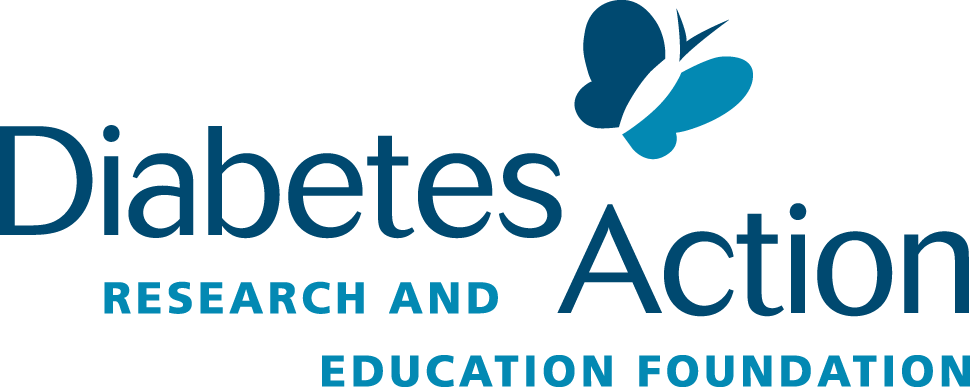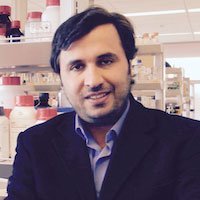
past Research
2018
Home > Research > Past Research > 2018
Cure for Type 1 Diabetes
A PROGRAM FOR THE CURE OF TYPE 1 DIABETES USING A GENERIC DRUG: PHASE II
Researcher:
Denise L. Faustman, MD, PhD., Associate Professor
Harvard Medical School and Director Immunobiology Laboratory
Massachusetts General Hospital
Charlestown, MA
Purpose:
In August 2012, results of the Phase I trial showed that the pancreas of long-term diabetics was able to transiently make insulin after two doses of the Bacillus Camlette-Guerin (BCG) vaccine. In 2018 a follow up report on a total of 232 participants both treated and untreated with BCG, published in the journal Vaccines, showed positive results in lowering blood sugars in subjects with type 1 diabetes to almost normal levels while also reducing the amount of insulin needed about one-third after 5 to 8 years from the initial treatment with the BCG vaccine without any reports of severe hypoglycemia. The 2015 FDA approved Phase II clinical trial, which is now fully enrolled with 150 participants with long-term type 1 diabetes, will determine the dose and frequency of doses required to reverse type 1 diabetes. It is still necessary to obtain funding to track these patients for an additional five years with the ultimate goal of bringing BCG to market as an approved treatment for type 1 diabetes. Five additional clinic trials with BCG/placebo to over 200 subjects are currently ongoing.
ESTABLISHMENT OF TOLERANCE TO PROINSULIN TO PREVENT OR REVERSE TYPE 1 DIABETES
Researcher:
Teresa DiLorenzo, PhD, Professor
Albert Einstein College of Medicine
New York, NY
Purpose:
Beta cells in the pancreatic islets are responsible for making insulin, which is essential for controlling how sugar is used in the body. Type 1 diabetes is an autoimmune disease that occurs when the T cells of the immune system kill the beta cells and insulin can no longer be made. Suppressing all of the T cells of the body could prevent, or even reverse, type 1 diabetes. However, suppression of all the T cells would lead to serious side effects such as an increased susceptibility to infections and cancer. This alternative approach seeks to suppress only those T cells that are responsible for destroying the beta cells. The researchers also hope to facilitate the development of T cells that can suppress the remaining disease-causing T cells.
USING AN ANTIGEN SPECIFIC MONOCLONAL ANTIBODY TO MODULATE ISLET AUTOIMMUNITY AND REPROGRAM THE DEVELOPMENT OF TYPE 1 DIABETES
Researcher:
Li Zhang, MD, Ph.D., Assistant Professor
Baylor College of Medicine
Houston, TX
Purpose:
Type 1 diabetes (T1D) is an islet specific autoimmune disease; insulin is a key self-antigen of T1D in humans. Our hypothesis is that a monoclonal antibody targeting insulin, the most important self-antigen, is able to modulate the development of T1D. Previously we successfully generated a mouse-anti-human insulin specific monoclonal antibody, MAb1E7, and confirmed that mAb1E7 suppresses disease associated auto-reactive lymphocytes of T1D patients. In order to decrease the immunogenic of the mAb1E7, here we propose to humanize the mAb1E7 by replacing its non-functional fragments with human amino acid sequences. We will modify the mAb1E7 to a human IgG so that the antibodies may be used for humans. We will test the ability of the humanized mAb1E7 to inhibit disease associated auto-reactive lymphocytes of T1D patients. If this project is successful, 50-60% of T1D patients who have specific high risk gene may benefit from this therapeutic modality.
DEVELOPMENT OF A MACROCELL (ISLET) ENCAPSULATION DEVICE TO CURE DIABETES
Researcher:
Douglas Sobel, MD
Professor of Pediatrics, Chief Pediatric Endocrinology
Georgetown University
Washington, DC
Purpose:
Islet transplantation is a promising approach to cure type 1 diabetes and some people with type 2 diabetes, but current treatment requires high dose toxic systemic immunotherapy to prevent rejection. Over the last year, Dr. Sobel’s lab has made much progress to overcome major obstacles that have prevented this therapy. They have synthesized a new PLGA-Microsphere system able to release three important drugs to prevent islet rejection over a very long period of time, characterized the physical properties of the microsphere system, and by doing this, have made headway to determine the optimal drug doses within the PLGA. To achieve their goal to safely inhibit rejection of islet transplantation, they will explore an important potential local immunotherapy drug entanercept, fully determine the optimal doses for the drug enladed PLGA, and assess the proper doses to prevent toxicity to the transplanted insulin producing cells in diabetic mice in order to cure them of their diabetes without rejection of the new insulin producing cells. They hope that future studies will lead to curing people with diabetes.
diabetes prevention
LONG-TERM TRAJECTORY OF EARLY VERSUS LATE ONSET TYPE 2 DIABETES: THE CORONARY ARTERY RISK DEVELOPMENT IN YOUNG ADULTS (CARDIA)
Researcher:
EunSeok Cha, Ph.D., MPH, MSN, CDE, RN
Assistant Professor
Emory University Nell Hodson Woodruff School of Nursing
Atlanta, GA
Purpose:
Individuals with early-onset type 2 diabetes (before age 40) have much greater risks of developing chronic diabetes complications compared to those with late-onset diabetes (after age 40), even if they have had diabetes the same length of time. However, current screening, prevention, and treatment guidelines for early-onset are normed for those of late onset. Using data from a landmark observational study, the Coronary Artery Risk Development in Young Adults, this study aims to identify possible differences in the predictors of developing pre-diabetes and type 2 diabetes between early and late onset type 2 diabetes groups. Contributing factors to generate different progression mechanisms in early and late-onset diabetes will be examined. Findings will provide information to increase the precision of diabetes prevention, identification, and care for individuals at risk for and with early onset type 2 diabetes.
IDENTIFICATION OF EARLY CIRCULATING DIAGNOSTIC AND PROGNOSTIC BIOMARKERS FOR TYPE 2 DIABETES MELLITUS
Researcher:
Sandra Lobo, Ph.D.
Director, Biomedical Research Institute
Western Connecticut Health Network
Danbury, CT
Purpose:
Type 2 diabetes is a metabolic disease and a growing global epidemic. Current tests diagnose patients with type 2 diabetes at a late stage when treatment is problematic due to severe metabolic imbalances in these patients. Treatment goals involve tight control of glucose levels to delay the progression of type 2 diabetes and prevent the complications known to significantly decrease the quality of life. Current therapies would be more effective when used in patients at high risk for developing type 2 diabetes before the metabolic imbalances set in. This study will help identify early biomarkers circulating in the blood of patients that affect metabolic function placing them at risk of developing type 2 diabetes, prior to its onset. These patients will benefit from lifestyle and/or drug treatment to prevent developing type 2 diabetes rather than delay its progression.
COMPLEMENTARY / NUTRITION RESEARCH
INFLUENCE OF ACTIVATION OF CB2 RECEPTORS ON CEREBROVASCULAR FUNCTION
Researcher:
William G. Mayhan, Ph.D.
Professor and Dean
University of South Dakota-Sanford School of Medicine
Vermillion, SD
Purpose:
In addition to producing abnormalities to the peripheral circulation, diabetes also has profound effects on the brain. Cognitive function is decreased and the incidence of stroke is increased by diabetes. Although the precise mechanisms responsible are not clear, the researchers suggest that impaired dilation of cerebral arterioles may contribute. Normally, cerebral blood flow will match metabolic demand (neurovascular coupling). However, during diabetes there is impaired vasodilation, and thus impaired neurovascular coupling. The researchers believe this scenario contributes to ischemic stroke during diabetes. Activation of cannabinoid receptors (CB2) has been shown to be protective in non-diseased models, but their potential protective role in the cerebral circulation during diabetes remains unknown. These studies will be the first to examine how activation of CB2 receptors may influence cellular pathways responsible for brain damage during diabetes. The researchers speculate that their studies will reveal a novel therapeutic approach for the treatment of cerebrovascular disorders during diabetes.
EXPLORING THE ROLE OF COCOA DERIVED EPICATECHINS ON BETA CELL GROWTH, FUNCTION AND SURVIVAL
Researcher:
Jeffery S. Tessem, Ph.D., Assistant Professor of Nutrition Science
Brigham Young University
Provo, UT
Purpose:
The incidence of diabetes is increasing rapidly, with decreased functional Beta-cell mass critical for disease progression. Interventions that increase Beta-cell mass could be used as a treatment for both type 1 and type 2 diabetes. Dr. Tessem’s lab has shown that cocoa epicatechins are protective against obesity-induced diabetes by decreasing body weight, improving glucose clearance and increasing B-cell function. Although these phenotypes are observed, these compounds have limited intestinal absorbance and are not observed in circulation. Dr. Tessem’s lab hypothesized that cocoa epicatechins may be metabolized by intestinal bacteria to absorbable compounds that can enhance beta cell function. They have shown that the metabolites 5-phenylvaleric acid, homovanillic acid and hippuric acid enhance beta cell proliferation, survival and insulin secretion. The aim of this project is to determine the molecular mechanisms by which intestine derived cocoa epicatechin metabolites improve functional B-cell mass, and to use this to develop treatments for patients with diabetes.
PREVENTION OF AMYLIN AMYLOIDOSIS IN TYPE 2 DIABETES BY BOTANICAL BAICALEIN
Researcher:
Bin Xu, Ph.D., Assistant Professor
Virginia Polytechnic Institute and State University
Blacksburg, VA
Purpose:
The goal of this project is to investigate the novel functions of a natural product, baicalein, in the prevention and treatment of diabetes and its complications. Due to a rapidly aging population and the modern sedentary lifestyle, type 2 diabetes and related neurodegeneration are reaching epidemic proportions and they are among the fastest growing diseases in America and worldwide. Currently, there is no known cure for these diseases. One potential molecule link between these two diseases is a molecule call amylin. Excessive secretion of this molecule in type 2 diabetes patients can lead to the formation of toxic aggregates, which can deposit in the pancreas and in other organs such as the brain and cause damages in these tissues. The researchers discovered that baicalein potently inhibits amylin aggregation and reduces amylin-induced toxicity. The researchers will determine how baicalein can inhibit amyloid formation and test how effective baicalein is in a diabetic animal model.
TREATING AND PREVENTING COMPLICATIONS
THE FUNCTIONAL ROLE OF MICROENVIRONMENTAL CROSS- TALK IN MESENCHYMAL STROMAL CELL MEDIATED DIABETIC WOUND HEALING
Researcher:
James Ankrum, Ph.D., Assistant Professor
University of Iowa
Iowa City, IA
Purpose:
Diabetic wounds are the leading cause of non-traumatic amputation affecting a patient’s diabetes. Mesenchymal stem cells (MSC) transplanted into diabetic wounds have been shown to promote healing and resolution of wounds that otherwise would not heal. The researchers seek to understand whether the use of live MSCs in the wound are required or if delivery of factors produced by MSC are sufficient to promote healing. MSC are known to only live for a few days after transplantation and the ability to directly apply factors produced by MSC in an ointment form would significantly simplify the translation of this emerging therapy for diabetic wound healing. The role of cross-talk between MSCs and cells in the wound environment will be examined using in vitro and animal models that mimic many aspects of type 1 diabetes. The results of this study will contribute to tailored therapies for patients with type 1 diabetes.
Paper published December 2017
Paper published December 2017
Paper published January 2018
Paper published June 2020
NICOTINAMIDE RIBOSIDE PREVENTION OF NEUROPATHY IN TYPE 1 DIABETES
Researcher:
James Russell, MD, MBchB, MS, FACP, FRCP
Professor Dept. of Neurology, Anatomy and Neurobiology
Vice Chair for Research, Dept. of Neurology
University of Maryland School of Medicine
Baltimore, MD
Purpose:
Neuropathy eventually affects over 60% of patients with type 1 diabetes. Improved glycemic control is associated with amelioration of diabetic neuropathy but there is no treatment that prevents neuropathy developing or progressing. Neuropathy in type 1 diabetes may be associated with a decrease in tissue levels of nicotinamide adenine dinucleotide (NAD). Deficiency of NAD can affect critical pathways that protect cellular metabolic function in the peripheral nerve against oxidative and glutaminergic injury. A safe, orally bioavailable therapy is needed that can be taken chronically to prevent neuropathy developing in young adults. Dr. Russell’s lab will test if dietary nicotinamide ribosome (NR), which repletes NAD levels, prevents neuropathy in an animal model of type 1 diabetes. Dr. Russell’s lab obtained an FDA IND for NR treatment in human type 2 diabetic neuropathy. However, they need to determine if NR can prevent neuropathy in type 1 diabetes and if the effect can be sustained.
TESTING OF NEW INTERVENTION TO TREAT TYPE 1 DIABETES INDUCED KIDNEY FAILURE
Researcher:
Kai Y. Xu, Assoc. Professor
University of Maryland
Baltimore, MD
Purpose:
Type 1 diabetes causes kidney failure in which the kidneys are no longer able to remove waste from the body. (Na+and K+)-ATPase (NKA) is found in large amounts of kidney and plays a crucial role in kidney function. Studies have shown that significant reduction of the NKA activity is strongly associated with type 1 diabetes-induced kidney failure, indicating that NKA activity is an essential basis for kidney function. Dr. Xu has developed a NKA activator which markedly increases NKA activity. Dr. Xu hypothesizes that protecting kidney NKA activity through the NKA activator may offer a new disease modifying intervention to prevent and treat type 1 diabetes-induced kidney failure. The purpose of this study is to test whether the NKA activator protects kidney function against the progression of kidney failure. If the hypothesis is supported by the experimental results, this study will transform basic research findings into medical technology for better treatment of type 1diabetes-induced kidney failure.
ISLET CELL RESEARCH
INVESTIGATION OF ACTIVIN A AS A PRO-SURVIVAL MEDIATOR FOR PANCREATIC ISLET CELLS
Researcher:
Melissa Brown, Ph.D., RD
Assistant Professor
University of St. Joseph
West Hartford, CT
Purpose:
Diabetes is one of the most serious diseases affecting public health in the U.S. today. Diabetes is caused when there is a loss or destruction of the cells that secrete insulin. These important cells are called B-cells. The loss or destruction leads to a decreased amount of B-cells that function normally and ultimately, results in a reduced ability to control blood sugar levels. Dr. Brown’s research will address the need for successful techniques to protect the B-cells and keep them alive. The researchers hope that this will lead to an increased number of B-cells that function normally so that the blood sugar levels can be kept under control. The findings will apply to both type 1 and type 2 diabetes, will help to reduce the public health burden caused by diabetes, and most importantly, will hopefully improve the quality of life of those suffering with diabetes.
BIOPRINTING OF ENGINEERED PANCREATIC ISLETS INTO A PERFUSION BED
Researcher:
Ibrahim T. Ozbolat, Assoc. Professor
Penn State University
University Park, PA
Purpose:
Dr. Ozbolat previously demonstrated the micro-vascularization of engineered pancreatic islets in fibrin constructs under static conditions, where capillaries sprouted into the constructs facilitating intravascularization in engineered islets as well as capillary network around the islets. In this project, Dr. Ozbolat will bioprint pre-vascularized pancreatic islets made of mouse insulinoma cells and rat heart microvascular endothelial cells into a perfusion bed in order to create a perfusable platform for microcirculation of the engineered islets. Dr. Ozbolat will test the hypothesis that perfused tissue constructs improve islet viability and function through performing LIVE/DEAD assays, immunostaining and glucose challenging tests.
Insulin Resistance
UNDERSTANDING THE ROLE OF KSRP IN CONTROL OF INSULIN SIGNALING
Researcher:
Ching- Yi Chen, Ph.D., Associate Professor
University of Alabama at Birmingham
Birmingham, AL
Purpose:
Insulin plays an important role in maintaining normal blood glucose levels by activating a series of actions referred to as the insulin signaling pathway in insulin target tissues. Defects in this pathway result in insulin resistance which predisposes an individual to the development of type 2 diabetes. Detailed understanding of how the insulin signaling pathway is regulated and how this pathway is disrupted during the progression of type 2 diabetes should provide a better way to reduce insulin resistance. The researchers plan to determine how a protein called KSRP controls the insulin signaling pathway and identify factors that are regulated by KSRP and involved in this pathway. These studies are expected to identify new factors in control of insulin signaling pathway which may serve as useful targets for drug development. Thus, much more effective therapeutic methods may be developed to increase insulin sensitivity in individuals with type 2 diabetes.
OBESITY/BARIATRIC SURGERY RESEARCH
TARGETING THE UNDERLYING INFLAMMATION IN OBESITY-ASSOCIATED METABOLIC SYNDROME
Researcher:
Guianglong He, Ph.D., Assistant Professor
University of Wyoming
Laramie, WY
Purpose:
As an emerging epidemic in the US and worldwide, obesity is associated with a constellation of metabolic disorders including insulin resistance, glucose intolerance, type 2 diabetes, hypertension and cardiovascular abnormalities. As a hallmark feature, obesity is accompanied with chronic inflammation leading to potential cell damage and organ dysfunction. Furthermore, obesity is associated with increased lipid accumulation in many tissues. Therefore, understanding the underlying mechanisms responsible for obesity-associated chronic inflammation and the consequences on myocardial dysfunction is significant. The overall goal of this study is to determine the upstream signals that activate the pro-inflammatory responses and their consequences on myocardial dysfunction in high fat diet-induced obesity. With the critical knowledge obtained from these studies, potential pharmacological interventions may be possible aiming at inhibiting the deregulated lipolysis process and the pro-inflammatory responses associated with high fat diet-induced obesity.
LUMINAL COATING OF THE INTESTINE FOR REDUCED GLUCOSE ABSORPTION
Researcher:
Jeffrey M. Karp, Ph.D., Associate Professor
The Brigham and Women’s Hospital
Cambridge, MA
Purpose:
Roux-en-Y gastric bypass (RYGB) surgery is regarded as the gold standard treatment of obesity and obesity-related type 2 diabetes. However, its invasive and non-reversible nature has limited its application to small patient subgroups. Surgical isolation of the proximal bowel following this surgery is thought to be a critical driver of the observed clinical benefits. The study aims to develop an orally administered gut-coating formulation that provides a transient barrier to nutrient contact with the proximal intestinal mucosa, thus recreating an important aspect of the surgical procedure non-invasively. Through screening candidates for barrier formation the researchers identified sucrose octasulfate aluminum complex and further engineered it to rapidly form an effective transient physical coating in-situ within the duodenum. Here the researchers aim to further engineer the gut coating agents and validate that oral administration of this gut-coating formulation provides an effective barrier to glucose absorption and lowers postprandial blood glucose concentration.
EFFECT OF EXERCISE AND CALORIC RESTRICTION ON IMMUNE HEALTH INSULIN RESISTANCE IN BARIATRIC PATIENTS
Researcher:
Steven K. Malin, Ph.D., Asst. Professor
Director Applied Metabolism & Physiology Lab
University of Virginia
Charlottesville, VA
Purpose:
Bariatric surgery is increasingly being used as a therapeutic option to combat rising rates in obesity and, in some cases, also treat diabetes and cardiovascular risk factors. However, recent work suggests that not all individuals respond the same way. In fact, some people appear to have higher risk of complications during the procedure than others. The reason for this finding is unclear but pre-operative health related to adipose tissue immune health and insulin resistance appear important. This research will test the effectiveness of pre-operative exercise and/or diet on improvements in immune health and insulin resistance to determine if health improvements before surgery drive greater changes in patient outcomes after the procedure. This study has clinical and public health relevance since determining the best lifestyle approach pre-operatively may minimize surgical difficulty and enhance the effectiveness of surgery on obesity related disease in the future.
technology
INTRODUCING CONTINUOUS GLUCOSE MONITORING TECHNOLOGY AT DIAGNOSIS IN PEDIATRIC TYPE 1 DIABETES: A QUALITY IMPROVEMENT PROJECT
Researcher:
Paul Hiers, MD
Pediatric Endocrine Fellow
University of Florida
Gainesville, FL
Purpose:
Diabetes technology is changing and has quickly become an integral part of diabetes care and management. Typically, patients will need to wait months due to paperwork, insurance, and logistical issues before they can utilize these technologies. With this project, the researchers plan to introduce technology to all our newly diagnosed type 1 diabetic patients at diagnosis. This will allow very early access to the technologies, potentially improving care, improving glycemic control, improving safety, and easing burden of disease months before patients would be able to obtain these technologies normally.



















